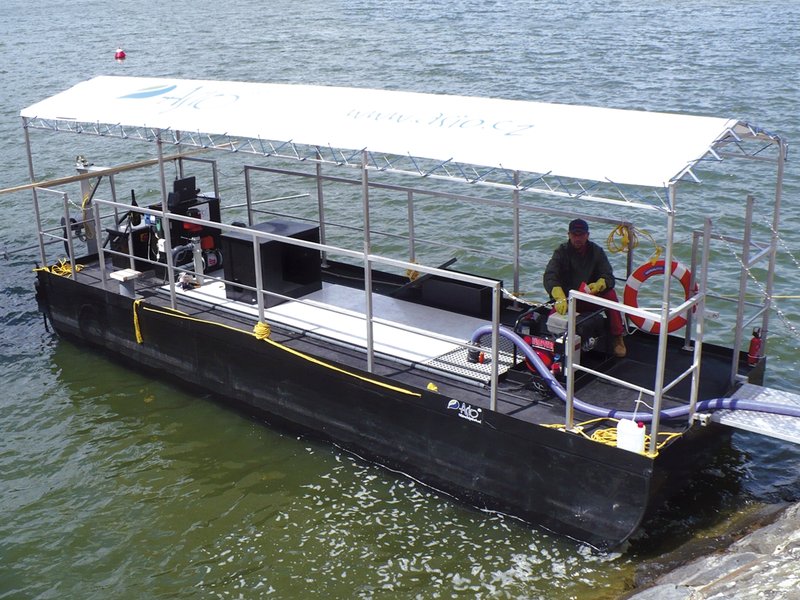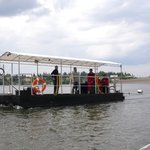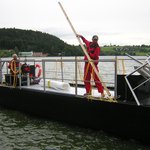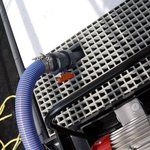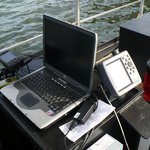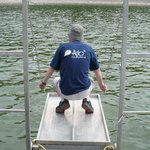The controlled dosing of a substance for cyanobacteria precipitation, by an application vessel
The vessel is used for the controlled dosing of an applied substance beneath the water surface.
Method
For this technology, the physical-chemical principle of cyanobacteria multiplication suppression is used, namely the dosing of coagulant into surface water. The vessel can be used for the controlled and exact dosing of any liquid substance into reservoirs, with detailed reporting as to the application.
Principle
The principle eliminating cyanobacteria from the water column of the reservoir with coagulant is as follows:
The basic nutrient element of cyanobacteria is phosphorus. Therefore, we try to remove it from water, eliminate its supply, or transform it into a form that cyanobacteria cannot use. Coagulant (an inorganic compound that neutralizes the surface charge of particles in water and enables agglomeration in larger wholes) - e.g., polyaluminium chloride, which is applied in water in optimal doses. Polyaluminium chloride causes the formation of aluminium hydroxide floc and at the same time forms insoluble complexes with phosphorus. These compounds can then no longer serve as a source of nutrients. Aluminium hydroxide flocs sediment and at the same time removes dispersed substances, algae, and cyanobacteria from the water column. Aluminium hydroxide flocs settled on the bottom create a barrier that prevents the release of phosphorus from the sediment into water. An advantage of precipitation, as compared to the application of algicides, consists in not disturbing cyanobacteria cells, which means that toxins from cyanobacteria cells do not get into water. The aim of the application is to ensure that they drop towards the bottom, to a layer where they can no longer carry out photosynthesis and their gradual decomposition will occur.
Description
The vessel contains a tank for approx. 6 t of coagulant. The coagulant (or another liquid substance) is re-pumped from a cistern truck to tanks located on the lake bank. From there, coagulant is pumped into the tank in the vessel. Everything is done under strict safety conditions, and “not a single drop of coagulant is lost”. The applied dose is determined on the basis of a coagulation test for each day of application. The application period usually takes several days, depending on the area and volume of the water reservoir. The dosed quantity of the applied compound further depends on the speed of the vessel and depth of water below it. On the basis of these parameters, the operator controls the exact and efficient dose of coagulant for the particular application. Another advantage is the use of a GPS sea navigation system that registers the current coordinate position, and moreover it plots the path of the covered track where coagulant has already been applied, so the operator is able to ascertain where the compound has been applied and where it has not. Using the above mentioned technology, it is obvious that we are able to dose the optimum environmentally friendly and at the same time economical dose of coagulant for the particular profile and for any given cyanobacteria concentration. The vessel for the application of chemicals is approved by the State Navigation Administration and is approved for sailing in Czech waters as well as abroad for navigation zone 3.

